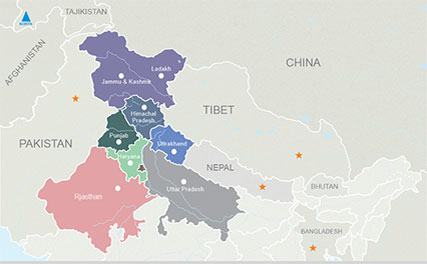
Kailash Manasarovar Aerial Darshan at Just @ Rs 35,000 Reserve Your Seat Now! Click Here
Inculcating some of the peculiarly exotic places to visit, the city of Lhatse is a pristine epitome of a cherry on the top of a cake. It is considered as the ‘heartthrob’ of millions not only for its delectable cuisines or places to visit but also a diverse availability of the distinct culture and traditions. You will be stunned to see a great number of people stopping here to swipe off their hunger during lunch or dinner as the west of Lhatse is divided by the roads to Mount Everest and the Mount Kailash. Presently, Lhatse tour is asked by many and thus, is proving to be a part of varied travellers’ ‘hit list’ every year. Lhatse shows its true colours and the eternal delight during the summertime as the green fields and the pristine yellow sunlight touches the serenity of this place.

5,000
Pelkor Chode Monastery, Lhatse Dzong, Yamdrok Lake
20°C to 25°C
15°C to 20°C
-10°C to 0°C
The new town of Lhatse is known by various other names such as Lhatse Xian, Quxar, Quxia or Chusar. It is a small town with sparse population in the Tibet Autonomous Region in the valley of Yarlung Tsangpo River in Lhatse County. Situated 10 kilometers south of the ancient village of Lhatse and the small Gelug monastery of Lhatse Cho De, this town offers mystifying places to visit. The ruins of the old dzong or Drampa Lhatse near the opening of the Yarlung Tsangpo Canyon can be seen above the monastery. Another small monastery called Changmoche is at the western end of the town. Xiqian hot springs are at 10 kilometers east of Lhatse and are widely renowned for their healing properties. Again towards the east are the ruins of the Drampa Gyang Monastry.
Treasure finder Sangpo Drakpa discovered the popular Nyingma text by Padmasambhava called the Leu Dunma in the 14th century. This doctrine is an exquisite collection of prayers and devotions.
The north portion covers the massive ruins of the Gyang Bumoche or Gyang Bumpoche, which was built in the style of the Kumbum by the Sakya Sonam Tashi and the famous polymath and bridge builder, Thang Tong Gyalpo and decorated in the Lato style of painting. This Jonang school stupa was also called Tongdrol Chemp. Towards the east of the ruins of the kumbum is the restructured Phuntsoling Monastry. The renowned historian Taranatha of the Jonang School restored and expanded the main monastery and kumbum. Travelling a little further towards east, you will come across a beautiful little valley, which housed the nyingma gompa and hermiTAGes previously and further above there is the large cave of Gyang Lompo Lung containing a shrine. The adventurous travelers to the Lhatse town can further venture into Mt. Qomolangma Nature reserve where one can feel like being at the top of the world. Or can enjoy the remote, rustic, dramatic and utterly breathtaking atmosphere of the Phuntsoling monastery, the spiritual atmosphere of the Juenang Temple, the peaceful and friendly Lhaze Nunnery.
The roads to Mount Everest and Mount Kailash divides just west of Lhatse, which is why the town is a popular lunch stop for tour groups.
Put us on work to plan your next travel. Send your details to our experts now to get a free travel plan with quote